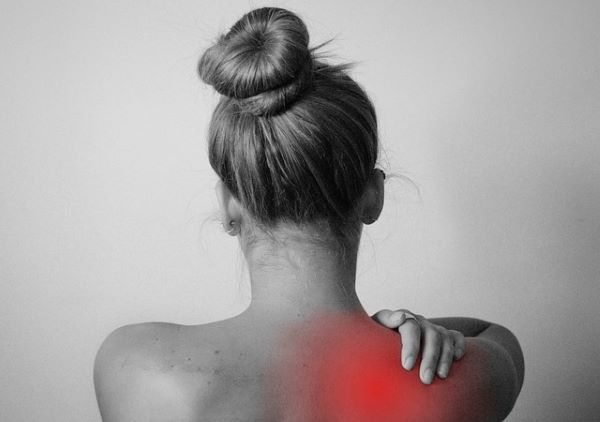Osteoporosis is a condition that weakens bones, making them fragile and more likely to break. While both men and women can develop osteoporosis, women are significantly more prone to this disease. According to the International Osteoporosis Foundation, women account for 80% of all osteoporosis cases worldwide. Understanding why women are more vulnerable to osteoporosis is crucial for promoting better bone health and implementing preventive measures.
In this article, we will explore the reasons behind gender differences in bone health, focusing on the biological, hormonal, and lifestyle factors that contribute to women’s higher risk of osteoporosis.
Also, read: Aging Differently: What Men and Women Should Now Know About Age-Related Changes
What Is Osteoporosis?
Osteoporosis is a bone disease characterized by the loss of bone mass and the weakening of bone tissue. This makes bones more brittle and prone to fractures, even from minor falls or stresses such as bending over or coughing. The most common fracture sites include the hips, spine, and wrists, though osteoporosis can affect any bone in the body.
Bone tissue is continuously being broken down and rebuilt. Osteoporosis occurs when the creation of new bone tissue does not keep pace with the removal of old bone, leading to porous, fragile bones. (Source)
Gender Differences in Bone Health: Why Women Are More at Risk
1. Bone Mass and Density
One of the primary reasons women are more susceptible to osteoporosis than men is their lower bone mass and density. Women tend to have smaller, thinner bones than men from a young age, which puts them at a disadvantage when it comes to bone strength.
- Bone mass in women: Women reach their peak bone mass (the highest amount of bone density they will ever have) earlier than men, typically by their mid-20s. After this peak, bone density gradually begins to decline in both genders, but the effects are more pronounced in women due to their lower starting point.
- Bone loss in men: Men also lose bone density as they age, but their larger, denser bones offer greater protection against the early onset of osteoporosis. Men typically experience a slower rate of bone loss compared to women. (Source)
2. Hormonal Changes: The Role of Estrogen
Hormones play a critical role in maintaining bone density, and estrogen is particularly important for women. Estrogen helps to regulate bone remodeling, the process by which old bone tissue is replaced with new bone. However, estrogen levels fluctuate throughout a woman’s life, which can significantly impact bone health.
- Menopause and estrogen drop: The most significant factor contributing to osteoporosis in women is the sharp decline in estrogen levels that occurs during menopause. Estrogen has a protective effect on bones, and when its levels drop, bone resorption (the process of breaking down old bone) accelerates. This leads to a rapid loss of bone density, making women more susceptible to fractures.
- Pre-menopausal bone health: Even before menopause, fluctuations in estrogen levels during a woman’s menstrual cycle can affect bone health. Women who experience irregular periods or hormonal imbalances may be at a higher risk of developing osteoporosis later in life. (Source)
3. Life Expectancy and Aging
Women tend to live longer than men, which is another factor that increases their risk of osteoporosis. Since bone density naturally declines with age, the longer a person lives, the greater the cumulative bone loss they experience. Women’s longer life expectancy means they are more likely to experience significant bone loss and the associated risks of fractures.
- Bone loss with aging: After the age of 50, bone loss accelerates in both men and women, but because women typically enter this phase with lower bone density, they are more vulnerable to fractures.
- Fracture risk in older women: The likelihood of osteoporotic fractures, particularly in the hips and spine, increases dramatically with age in women. Hip fractures in older women are especially concerning, as they often lead to a decline in mobility and quality of life. (Source)
4. Pregnancy and Breastfeeding
Pregnancy and breastfeeding also have an impact on women’s bone health. During pregnancy, a woman’s body requires extra calcium to support the growing fetus. If a woman’s calcium intake is insufficient, her body may pull calcium from her bones to meet the baby’s needs, potentially weakening her bones over time.
- Temporary bone loss: Breastfeeding can also lead to temporary bone loss, as calcium is transferred from the mother’s body to produce milk. While this bone loss is usually reversible after breastfeeding ends, it can contribute to the overall decline in bone density if a woman does not have adequate calcium stores. (Source)
5. Lifestyle Factors: Diet, Exercise, and Smoking
While biological and hormonal factors play a major role in the development of osteoporosis, lifestyle choices also significantly impact bone health. Certain habits and behaviors can either protect against or contribute to bone loss.
- Calcium and Vitamin D intake: Calcium and Vitamin D are essential for maintaining strong bones. Many women do not get enough calcium through their diets, increasing their risk of osteoporosis. Vitamin D is crucial for calcium absorption, and a deficiency in this vitamin can further compromise bone health.
- Physical activity: Weight-bearing exercises such as walking, running, and strength training are vital for maintaining bone density. Women who lead sedentary lifestyles are more prone to bone loss because their bones are not subjected to the stresses that help build and preserve bone strength.
- Smoking and alcohol consumption: Smoking and excessive alcohol consumption are known to weaken bones and accelerate bone loss. Women who smoke or drink heavily are at an increased risk of osteoporosis and fractures. (Source)
Preventing Osteoporosis in Women
While women are more prone to osteoporosis than men, there are effective steps that can be taken to preserve bone health and reduce the risk of fractures.
1. Nutrition
- Increase calcium intake: Women should aim for a daily intake of 1,000-1,200 mg of calcium, which can be achieved through dairy products, leafy greens, fortified foods, or supplements if necessary.
- Get enough Vitamin D: Vitamin D is essential for calcium absorption. Women should aim for 600-800 IU of Vitamin D daily, either through sunlight exposure, diet, or supplements. (Source)
2. Regular Exercise
Engaging in regular physical activity is one of the most effective ways to maintain bone density. Weight-bearing exercises like walking, running, dancing, and resistance training help to stimulate bone growth and slow bone loss.
3. Lifestyle Changes
- Quit smoking: Smoking accelerates bone loss, so quitting is essential for preserving bone health.
- Limit alcohol consumption: Reducing alcohol intake to moderate levels (no more than one drink per day for women) can help protect bone density. (Source)
4. Hormone Replacement Therapy (HRT)
For women at high risk of osteoporosis, hormone replacement therapy (HRT) may be an option to help maintain estrogen levels and reduce bone loss, especially during menopause. However, HRT should be discussed with a healthcare provider due to potential risks and side effects.
Conclusion
Women are more prone to osteoporosis than men due to a combination of factors, including lower bone mass, hormonal changes, longer life expectancy, and lifestyle habits. Understanding these gender-specific differences in bone health is crucial for preventing osteoporosis and maintaining strong bones throughout life. By adopting a bone-healthy lifestyle that includes proper nutrition, regular exercise, and avoiding harmful habits, women can significantly reduce their risk of developing osteoporosis and improve their overall quality of life.





